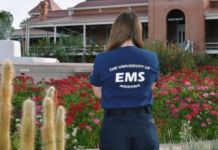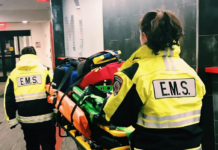Poster Presentation Abstract
Introduction: The National Highway Traffic Safety Administration’s Office of EMS (NHTSA EMS) estimates that there will be about 4,500 ambulance crashes this year. NHTSA EMS has also determined that 84% of EMS providers were not restrained in the patient compartment during transport. So why don’t providers wear seat belts? A small portion of this is attitude, but we believe that a much greater reason is that the design of present-day ambulances does not allow providers to render care and remain seated and secure. Program Development & Implementation: This poster will review the present-day situation and utilize pictures of an actual (fatal) ambulance crash as well as crash-test video stills. We will show hazards/injury areas and efforts that can be made to reduce them now. It will conclude with an attempt to reduce these hazards by introducing a new ambulance design from the Massachusetts Institute of Technology EMS. We have removed most cabinets and replaced them with drawers reducing strike zones. We have eliminated “squad” and “CPR” benches and replaced them with three captain’s chairs with 5 and 6-point harnesses. Program Evaluation: The design incorporates the following recommendations from the Ambulance Patient Compartment Human Factors Design Guidebook: “Forward- or rear-facing seats better protect the Emergency Medical Service Provider (EMSP) in the event of an accident or evasive maneuver than side-facing seat. Each working position needs to be equipped with its own restraint system that meets all other restraint guidelines to ensure that all … are restrained while the ambulance is in motion.”1 Discussion/Conclusion: This new ambulance was built by Braun Ambulance in a cooperative effort and incorporates many design recommendations that have been recommended for years.
References: 1. Avery L, Jacobs A, Moore J, Boone C, Malone T. (Prepared for U.S. Department of Homeland Security Science and Technology Directorate First Responders Group.) Ambulance Patient Compartment Human Factors Design Guidebook. https://www.dhs.gov/publication/ambulance-patient-guidebook. Published January 13, 2015. Accessed December 31, 2017.











